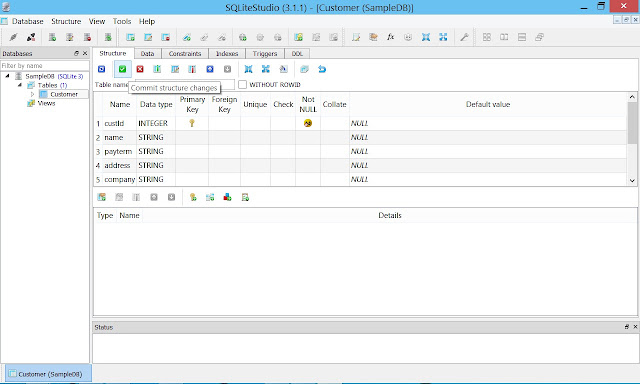

Without renaming columns in the first line, we would have ended up with two ‘Name’ columns and an ambiguous ‘Population’ column in the returned table, which could create confusion in cases where more columns are involved. From the Country table (aliased as ‘co’), we select the Name column (renamed ‘Country’). From the City table (aliased as ‘ci’), we select the Name column (renamed ‘City’), and the Population column (renamed ‘City Pop’).
#SQLITESTUDIO INSERT COLUMN CODE#
Another import or export format, another table data populating strategy, another SQLite database format, SQL code formatter, code highlighter, table cell value representation renderer - all of these can be exteded with. For example another scripting language can be added with plugin. The below query joins data from the City and Country tables in the world database. SQLiteStudio supports plugins of several categories. Inner joins only return data where the specified conditions are met for both tables in a query. Pour ajouter une colonne à une table existante avec sqlite il faut utiliser la commande Sqlite: ALTER TABLE: ALTER TABLE NomTable ADD COLUMN NomNouvelleColonne ColonneType. insert into emp (empid, empname, address) values(1254541, Johan, Mumbai) Now see inserted records by using the select statement as follows. Now perform the insert operation as follows. The world database contains 3 tables: ‘City,’ ‘Country,’ and ‘CountryLanguage.’ These tables are all related to each other through a shared country code variable, which allows data across the three tables to be joined. Here we created a new table name as emp and in this case, the empid column is referred as rowid column.

This article covers different types of relationships and joins in SQLite - which supports many of the features of standard SQL, but with lower memory requirements- using the world database and SQLiteStudio. Understanding the basics of relationships and joins is necessary for working with any relational database management system. Structured Query Language (SQL) is the standard programming language for communicating with relational databases, which organize related data in the form of tables. Photo by Belinda Fewings on Unsplash Introduction


 0 kommentar(er)
0 kommentar(er)
